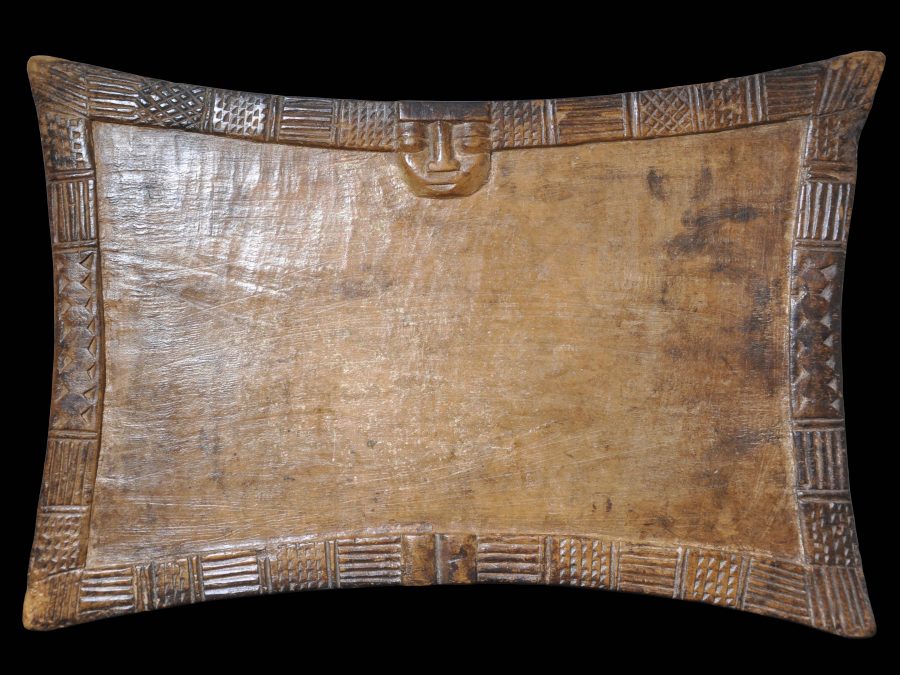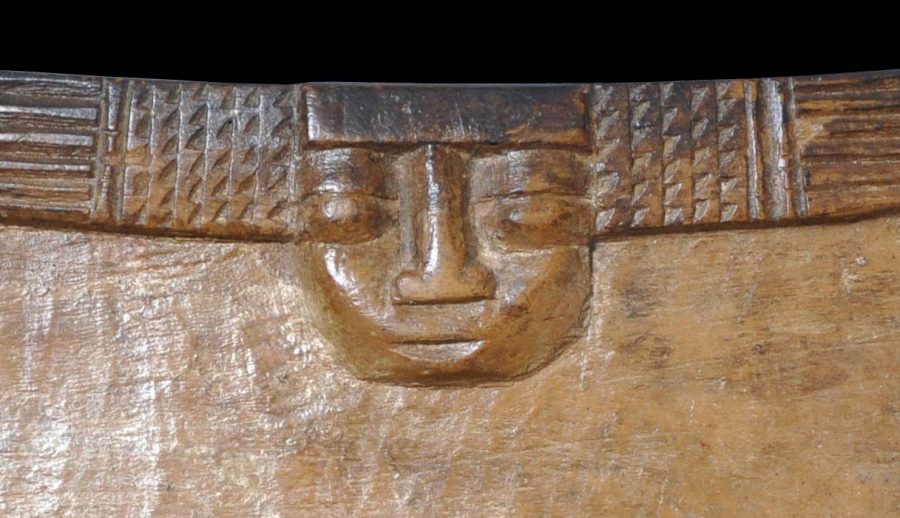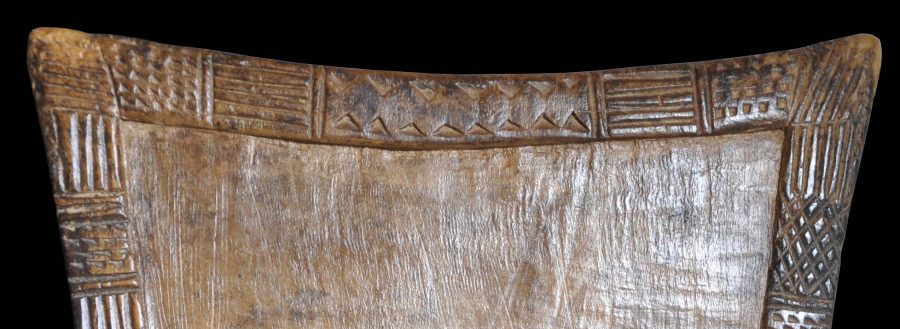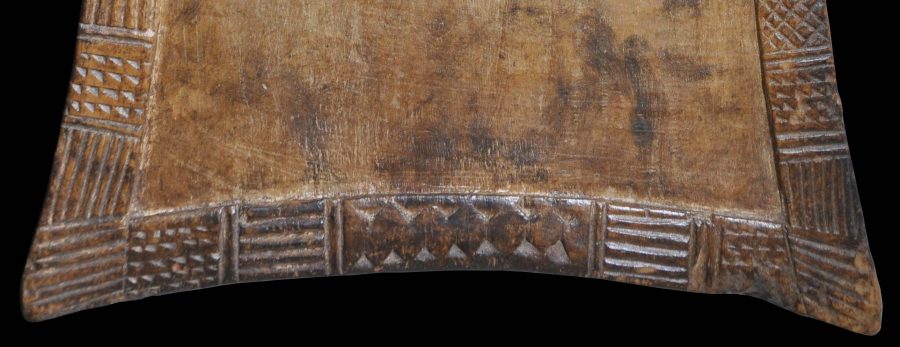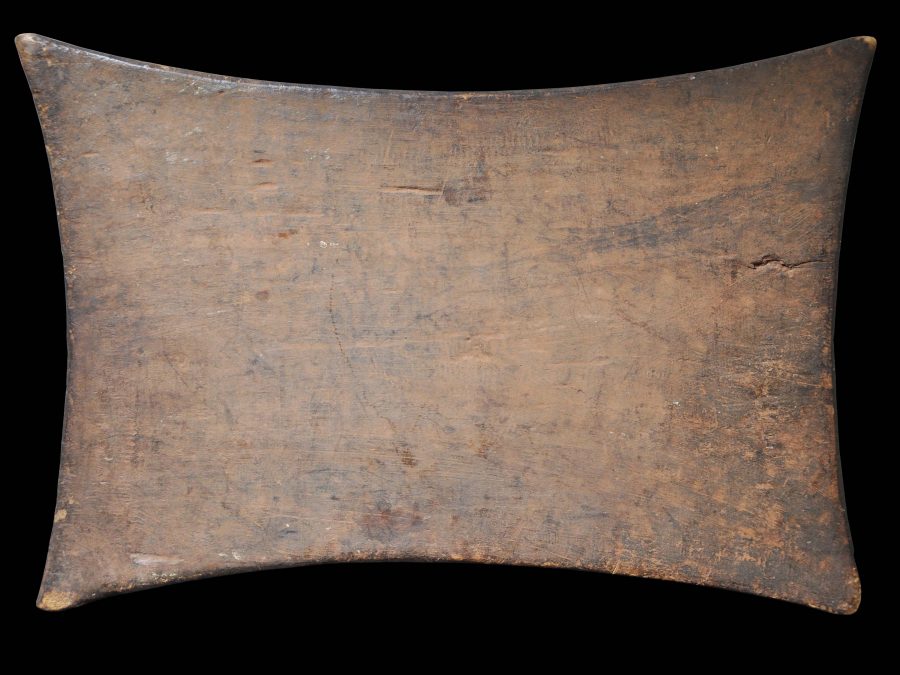Enquiry about object: 5560
Rectangular Yoruba Divination Board (Opon Ifa)
Yoruba People, Nigeria 19th-early 20th century
width: 40cm; length: 27cm and thickness: 2cm
Provenance
UK art market
Rectangular divination boards (Opon Ifa) with concave sides such as this one are rare. It is carved from a single piece of light wood. A prominent face with a joyous expression is carved to the top of the board. The face represents Eshu, the messenger deity who acts as a medium between the human and spirit realms.
It shows good signs of use, which is evident from the tapping marks on the surface of the board. Overall, the board is in good condition. It has a honey yellow glossy patina. Its proportions are elegant and its shape pleasing and sculptural.
During the Ifa divination rituals, a highly trained priest called Babalawo would mark single or double marks in wood powder on his divination board until one of the 256 available odus is created. Odus is a set of traditional verses that represents thousands of years of observation, predictions; and both mundane and spiritual prescriptions. Babalawo is translated as ‘the father of ancient wisdom’. He is the medium between human and the Yoruba mythical deities such as Orunmila the spirit of wisdom who governs human’s destiny and prophecy and Eshu the messenger who delivers knowledge and guidance in times of trouble. Babalawo would sprinkle pulverised wood or yam flour onto the depressed central area of the board and taps rhythmically on it with a tapper (Iroke Ifa) to invoke the presence of Orunmila. A bowl (Agere Ifa) is used to contain the sixteen sacred palm nuts (Ikins), which must have at least 3 “eyes”. He groups the palm nuts in one hand, and shifts them to another hand at once. The remaining palm nuts in the original hand, desirably one or two, are counted and marked.
In 2005, UNESCO added the Yoruba divination system to its list of ‘Masterpieces of the Oral and Intangible Heritage of Humanity’.
The Yoruba form one of the largest tribes in West Africa. There are 30 million Yoruba people in West Africa. They are predominant in Nigeria. 21% of the Nigerian population are Yoruba. Most still speak Yoruba language. Today, 60% of the Yoruba are Christian and 30% are Muslim. However, many, especially in rural areas, still practise old Yoruba traditions such as Ifa.
References
Abiodun, R., H. J. Drewal & J. Pemberton III, Yoruba: Art and Aesthetics, The Center for African Art and the Rietberg Museum Zurich, 1991.
Bacquart, J. B., The Tribal Arts of Africa, Thames & Hudson, 1998.
Drewal, H. J. & M. T. Drewal, Gelede: Art and Female Power among the Yoruba, Indiana University Press, 1983.
Finch, C., Finch & Co Autumn 2006: Catalogue No. 9, Finch & Co., 2006.
Fagg, W. and J. Pemberton, J., Yoruba: Sculpture of West Africa, Collins, 1982.
Rowland, A., H.J. Drewal, and J. Pemberton, Yoruba: Art and Aesthetics, Museum Rietberg, Zurich, 1991.


